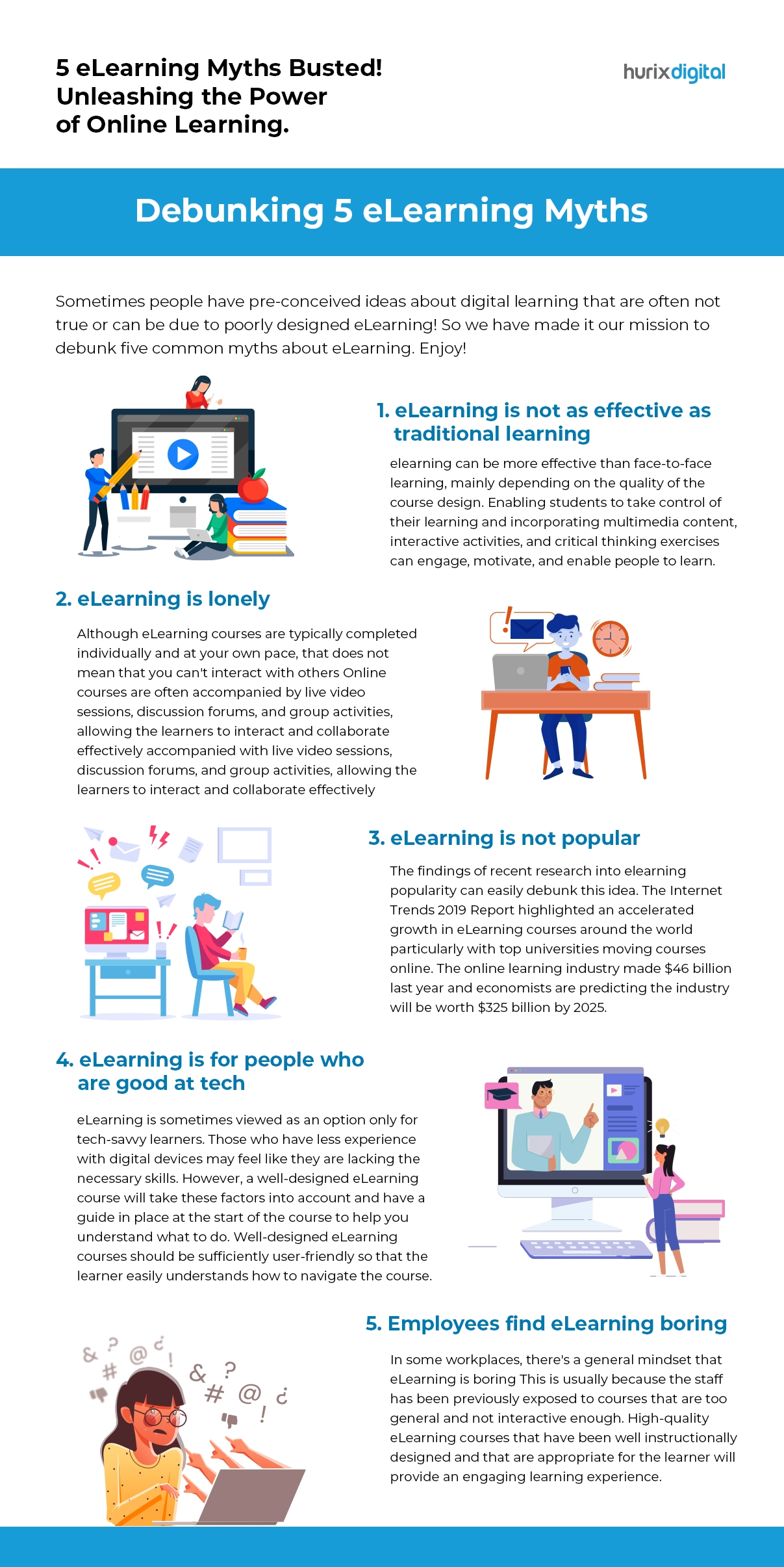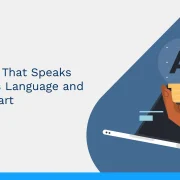Demystify eLearning! Explore truths that debunk five e-learning myths. Unleash the power of digital learning with facts that redefine the eLearning landscape!
Transform learning with truth! Debunk eLearning myths with Hurix Digital. Unleash the power of online learning for a brighter educational future! Contact us now to know more!

Understanding the Realities of Online Learning
Virtual learning has gained significant traction, dispelling many misconceptions. By examining common myths, we can appreciate the true potential of digital education.
Myth 1: Online Learning is Less Effective
Many assume learning online lacks the effectiveness of traditional classrooms. However, studies show that well-designed digital courses often lead to better retention and understanding. Research by the U.S. Department of Education indicates students in online environments perform better than those in face-to-face instruction.
Myth 2: eLearning is an Isolated Experience
Contrary to the belief that learning online is lonely, it fosters community through interactive elements like:
- Live video sessions
- Discussion forums
- Collaborative projects
These tools promote engagement and allow learners to connect with peers, making the experience supportive and enriching.
Myth 3: eLearning is Not Widely Adopted
The rise of eLearning is undeniable. Reports indicate the digital education market was valued at $46 billion last year, with projections suggesting it could reach $325 billion by 2025. This growth is due to universities and institutions embracing digital formats to meet students’ needs.
Myth 4: Only Tech-Savvy Individuals Can Succeed
A common misconception is that only those with advanced technical skills can thrive in online learning. In reality, well-crafted courses are designed for accessibility, often including:
- User-friendly interfaces
- Introductory guides
- Support resources
This ensures learners of all backgrounds can navigate and engage effectively.
Myth 5: Online Learning is Dull
Some view eLearning as monotonous, often due to poorly designed courses. High-quality online experiences are interactive and relevant. Engaging multimedia content and practical applications enrich the educational experience, making it enjoyable.
Conclusion
Dispelling these myths is essential for understanding the true benefits of virtual education. Recognizing its effectiveness, community aspects, widespread adoption, accessibility, and engaging nature allows individuals to make informed decisions about their learning paths, opening doors to numerous opportunities.




